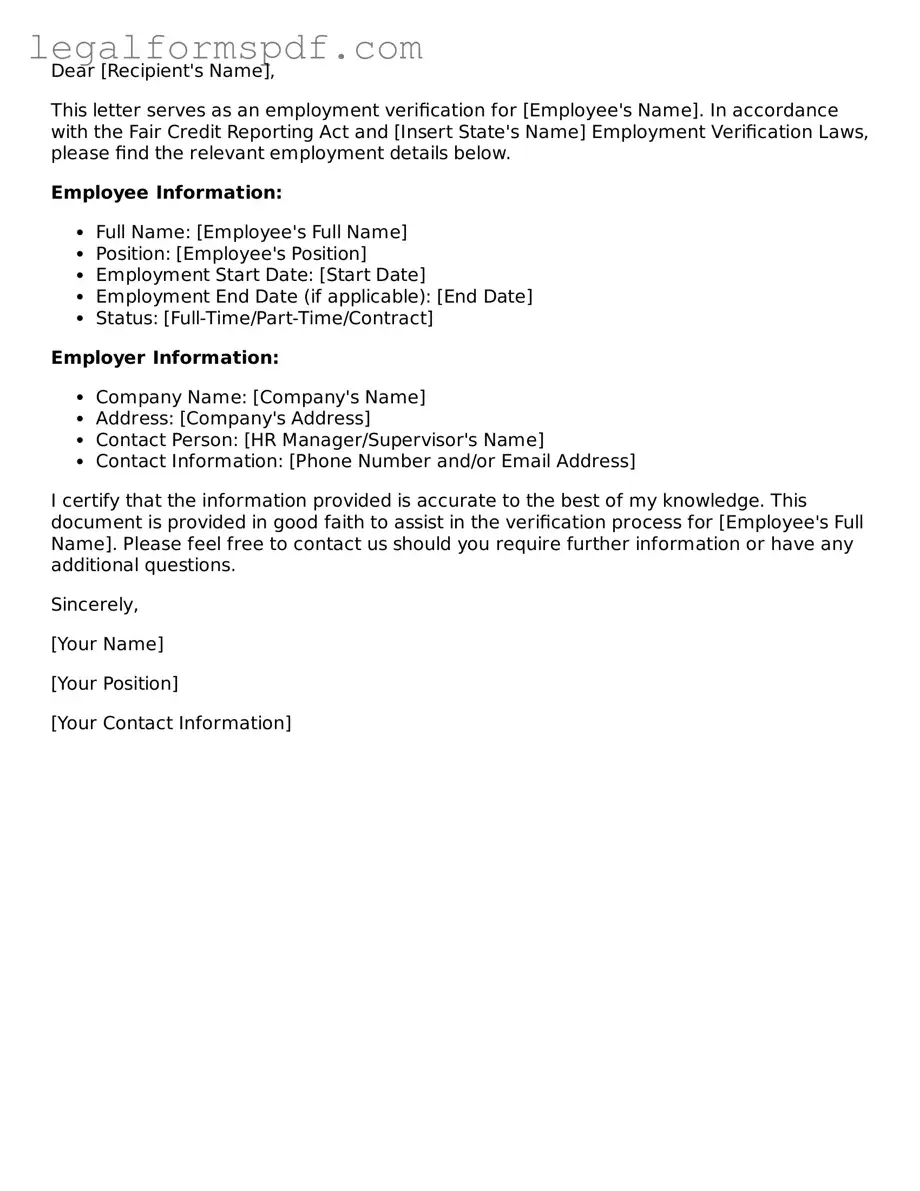The W-2 form, issued by employers to report employee annual earnings and tax withholdings, bears a resemblance to the Employment Verification form. Both documents serve as formal records from the employer, providing crucial data about the employee's financial and employment status, which are essential for external processes like loan applications or tax filings.
An I-9 form, required for verifying the identity and employment authorization of individuals hired for employment in the United States, shares similarities with the Employment Verification form. Each plays a key role in the employment process by ensuring that employees meet certain criteria, with the I-9 focusing on legal work eligibility and the Employment Verification confirming employment details.
Pay stubs, provided by employers with each paycheck, mirror the Employment Verification form in their role of detailing an employee’s earnings and deductions. While pay stubs offer a breakdown of each pay period's financial details, the Employment Verification form provides a summary of the employment relationship, including job title and duration of employment.
The Job Offer Letter, which formally offers a position to a candidate, including details about the role, compensation, and start date, is akin to the Employment Verification form. Both documents confirm aspects of employment, though the Job Offer Letter serves as the initial agreement and the Employment Verification as a confirmation or proof of this agreement for third parties.
Reference Letters from previous employers often share some content with Employment Verification forms, as they can include confirmation of employment dates, job titles, and even character or performance assessments. While a Reference Letter provides a qualitative evaluation of the employee, an Employment Verification form offers quantitative employment facts.
The Experience Certificate is another document closely related to the Employment Verification form, especially in contexts outside the United States. This certificate usually confirms the employee’s job title, duties, and period of employment. Unlike the Employment Verification form, which is more standardized, Experience Certificates might also include performance insights.
Background Check Authorization forms, which grant permission to employers to verify an employee’s background, can contain information similar to what’s found on an Employment Verification form. Although primarily serving as consent forms, they may summarize the employment details that the background check will cover, reflecting a pre-verification step to the Employment Verification's post-employment summary.
The Salary Verification Letter is refined yet closely aligned with the Employment Verification form. It focuses specifically on confirming an employee's salary and often their employment status. While serving a specific purpose, often for financial qualifications like loans or leases, it similarly relies on employer-issued confirmation of employment details.
The Professional License or Certification verifies an individual’s qualifications in a specific field, similar to how an Employment Verification form confirms someone’s employment status and role. Although focusing on professional credentials rather than employment history, both document types serve as formal verifications needed for career advancements or regulatory compliance.
Lastly, the Non-Disclosure Agreement (NDA), while fundamentally different in purpose, shares a procedural similarity with the Employment Verification form. Both are formal documents often required during the employment process. An NDA safeguards proprietary information, and the Employment Verification form validates the employee's position and employment details for third-party verification needs.
